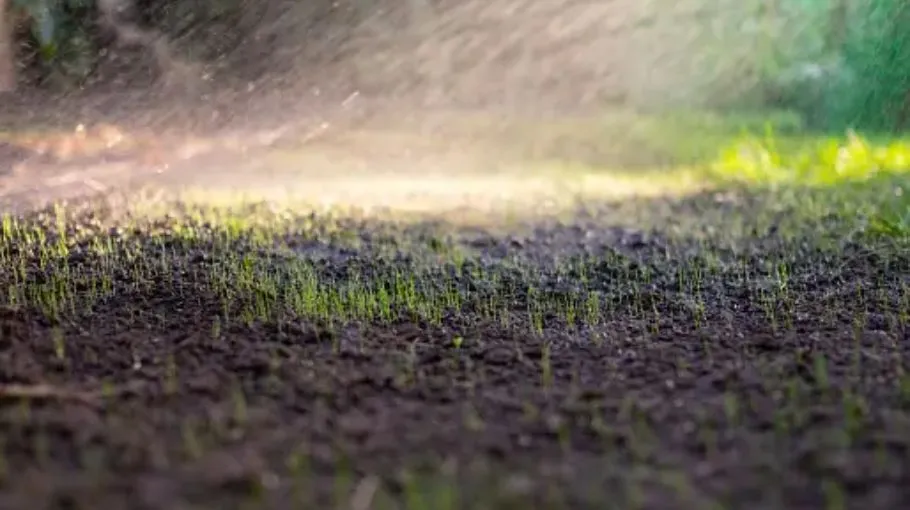How Often To Water New Grass Seed: A Complete Guide
A proper lawn care help to established lush and healthy lawn. The basis factor is to set the water routine for new grass. It helps to develop its growth and ensures to bring optimal results. Indeed, planting new grass seeds is not only a big investment. It helps to have a vibrant and lush lawn in no time. Many gardeners make some common mistakes that lead to tragedy. Watering the newly seeded lawn is not a simple task. Extra and little water both can create chaos for the lawn. Overwatering can take away the seeds and little water dry out the turf badly.
Getting a new lawn started with grass seed is an exciting step toward a beautiful outdoor space. However, one of the biggest challenges is figuring out how often to water new grass seed. Proper watering is essential for helping your seeds germinate and grow into a healthy, vibrant lawn. Too little water can leave the seeds dry and struggling, while too much can cause issues like seed rot or shallow roots.

In this blog, we’ll explore the best practices and suggestions for watering your new grass seed to ensure you achieve the green lawn you’ve been dreaming of.
How Often to Water New Grass Seed?
The right watering is an essential part of caring for new grass. The duration is just a vital aspect of establishing a healthy lawn. However, it is crucial to water the plants many days before planting new seeds. You should soak the soil 6 to 8 inches deep. Soaking will help to boost the germination process and deep root growth. It also helps to separate the nutrients from the fertilizer process. Use a screwdriver into the turf to check the soil’s conditions. For soil resistance, the plant seeds need more water for the best health.
During germination, it is vital to keep the soil moist. You can start with the short sessions; typically you should water the lawn three times a day. Try to avoid standing and too much water that may kill the seeds. If you cannot water twice a day, then do water at least once a day.
Understanding how often to water new grass seed is essential during the initial growth period. The first few weeks after planting are the most critical for watering your grass seeds. The following is a simple plan to follow:
- Days 1-7: Water your grass seeds two to three times a day. The goal is to keep the soil moist but not soaked. Watering in the morning, around noon, and in the late afternoon is a good schedule to follow.
- Weeks 2-3: After the first week, you can start watering a little less often; once or twice a day should be enough. The seeds should start to sprout during this time, and the grass will begin to grow. It’s important to keep the soil moisture consistent but avoid creating puddles.
- Weeks 4-5: By now, your grass should be growing, and you can water every other day. The roots of the new grass will be getting stronger, so they won’t need water as often.
- After Week 5: Once your grass is established, you can switch to a regular watering schedule. Watering once or twice a week should be enough, depending on the weather.

You May Also Like: How To Turn Yellow Grass Green Fast
Suggestions For Watering New Grass Seed
The following are some suggestions:

- Use a gentle spray: When watering, use a gentle spray setting on your hose or sprinkler. A strong stream of water can wash away the seeds or cause them to clump together. Sprinkler flow will depend on time, and pressure of water. It helps to demine how long you need to on the sprinkle system. So, you should know how much water you need to put on the lawn to avoid overwatering.
- Water in the morning: The early morning is best time to get healthy and lush lawn. However, morning and afternoon suitable time to water the newly seeding lawn. The temperature will be moderate during these timing. Also, the sunlight will be less to reduce the risks for lawn’s health. When you water the lawn in morning, it helps the grass to absorb moisture. It ensures proper growth of grass. The best time to water is early in the morning. It gives the water time to soak into the soil before the sun gets too hot and dries it out.
- Avoid puddles: If you notice water pooling on the surface, you might be watering too much. Try cutting back on the amount of water or the watering frequency.
- Watch the weather: If it rains, you might not need to water as much that day. If it’s hot and sunny, you might need to water more often. You can postpone the irrigating during heavy rain season. After the light shower, you should water the seed afternoon. A dry and hot spell may lead you to add extra watering session.
Signs That Your Grass Seed Is Getting Enough Water
It’s important to keep an eye on how your grass seed is doing. The following are a few signs that your seeds are getting the right amount of water:
- The soil stays damp: When you touch the soil, it should feel damp but not muddy. If it’s dry, your seeds need more water.
- The seeds start to sprout: After about a week or two, you should see little green shoots coming up from the soil. It means your seeds are getting enough water and starting to grow.
- The grass looks healthy: As the grass grows, it should look green and healthy. If it starts to turn brown or look weak, it might need more water.

What Happens If You Don’t Water Enough?
If you don’t get the watering frequency right for your new grass seeds, they might not grow at all. Seeds need water to germinate, which means they need moisture to start growing roots. Without enough water, the seeds will stay dormant in the soil and won’t turn into grass.
What Happens If You Water Too Much?
When it comes to when to stop watering new grass seed, it’s necessary to find the right balance. While watering is required for germination, too much water can create problems. If the soil remains constantly soggy, your seeds might rot or get washed away. To ensure strong and resilient grass, pay attention to the soil moisture levels and avoid excess watering.

Get Tailored Advice from Professionals
The lawn care is a complex task. When it comes to watering new seeded grass, it can be tough for newbie. This is where the expertise of experts at Perfect Greenyard services become invaluable. By leveraging our resources and knowledge, you can boost health of your lawn. Our experts can offer customized guidance that meet your needs. However, we can offer proper soil analysis to follow effective watering plan. It makes a big impact by having our professional services. So, do you ready to achieve the lush and healthy lawn?
Conclusion:
When it comes to how often to water new grass seed, timing and consistency are important. By following the recommended watering schedule, you’ll give your grass seeds the best chance to grow into a beautiful lawn. The goal is to keep the soil consistently moist but not overly saturated. With the right care and attention, your seeds will begin to sprout, and before long, you’ll have a healthy, green yard to enjoy.
FAQS
What is the best time to water grass seed?
The best time to water grass seed is early morning and late afternoon. This prevents evaporation, ensures even moisture, and supports healthy germination.
Do I need to cover grass seed?
Yes, covering grass seed with a thin layer of straw or soil helps retain moisture, protect seeds from birds, and improve germination. Avoid burying the seeds too deeply.
What is the best thing to put on grass seed?
The best thing to put on grass seed is a thin layer of straw, mulch, or topsoil. These help retain moisture, protect seeds, and promote even germination.
What is the best fertilizer for new grass seed?
The best fertilizer for new grass seed is a starter fertilizer with a higher phosphorus content, such as 10-20-10. Phosphorus supports strong root development for healthy growth.
How long do you soak grass seed?
Soak grass seed for 12–24 hours before planting to soften the seed coat and improve germination. Drain and plant immediately for best results.






